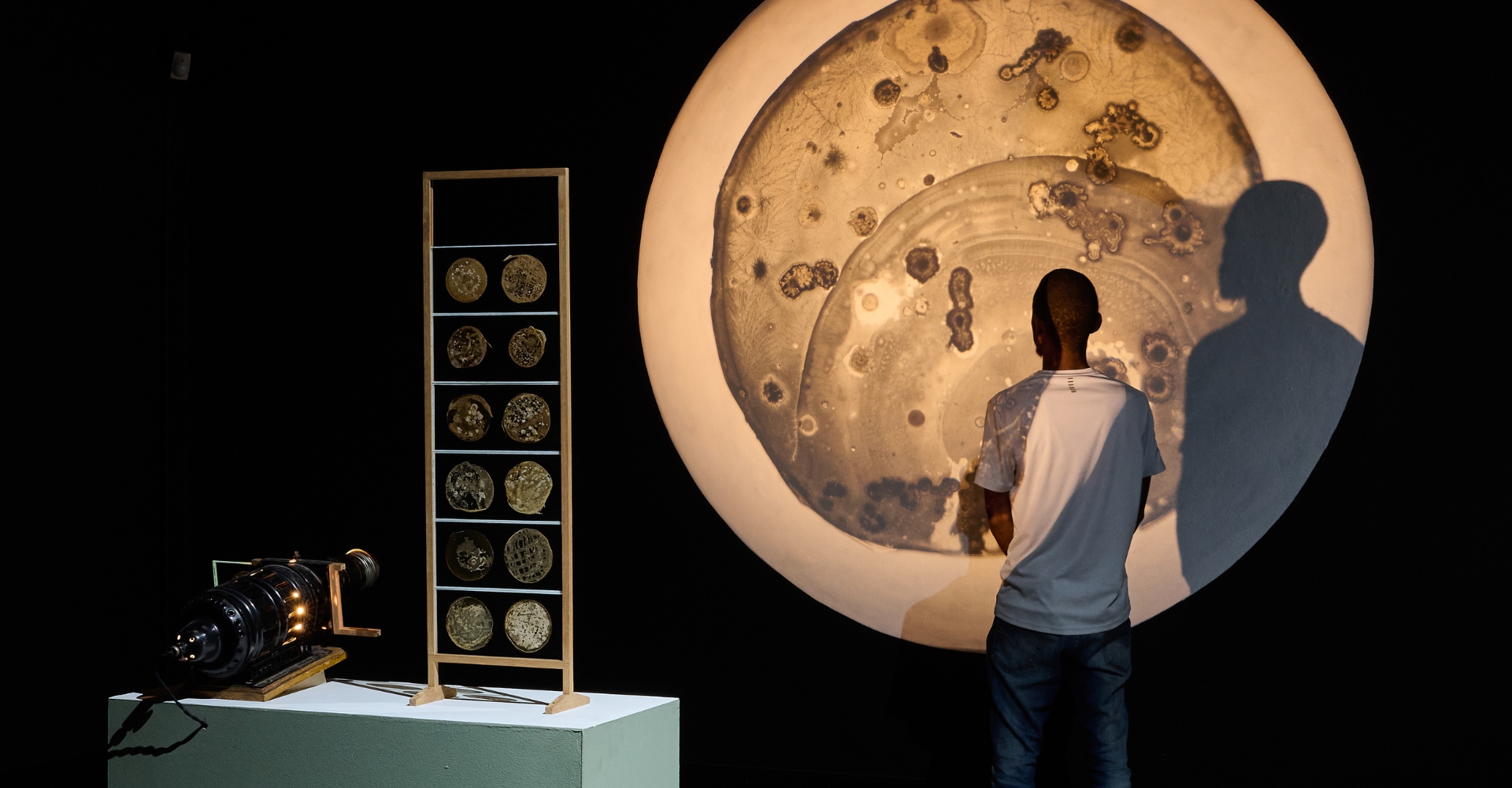“Life on Phone” began during Janneke de Lange’s artist residency at the University of Johannesburg. Invited to work with bacteria at the CMRC, a microbiology lab designed for artists, she chose to explore a microcosm that is both familiar and invisible: the bacteria living on her phone.
A device that is constantly used and carried everywhere, yet its biological, analog side is rarely considered. Through this research, de Lange investigates this hidden world while also rethinking her own relationship with her phone, contrasting a fully analog process with a hyper-digital object.
Using sterile swabs, she collected bacteria from the phone’s surface and cultivated them on nutrient agar in petri dishes. After a few days, she opened the dishes to dry the samples, preserving the colonies as delicate, textured layers. Their formations reveal an unseen world of beauty and diversity.
In the microbiology lab, de Lange learned the techniques needed to process the samples and later adapted them into a portable setup, allowing her to continue the research while traveling. Using sunlight for heat, she observed how bacterial colonies changed in different environments, reflecting the objects and surfaces she encountered. Over time, this process became part of her daily routine, blending into her everyday life.
For the past several months, she has maintained this practice, taking a sample every three days while traveling across continents and countries. The dried samples have been carefully preserved between sheets of glass.
To showcase them, she collaborated with the Magic Lantern Museum in Heiloo, using a 100-year-old Magic Lantern to project the images on a three-meter scale. This technique magnifies microscopic details, transforming bacteria into alien landscapes, unknown planets, celestial bodies. The projections reveal the hidden structures of the microbial world on her phone, while indirectly narrating the designer’s journey during the period of sample collection.
In parallel, she worked with South African photographer Leon Krige in his darkroom. Together, they used the bacterial samples as negatives, enlarging them onto decades-old Ilford fiber-based paper. This analog process produced highly detailed black-and-white images, offering another way to explore these invisible life forms—without any digital intervention.
Currently, de Lange is designing a display cabinet to preserve and exhibit the collection. Combining glass, woodwork, and the Tiffany stained glass technique, the cabinet will unfold and transform, acting as a miniature exploration space. This element will be completed in the coming months, in time for BASE Milano, allowing the project to bridge the microscopic, the cosmic, and the mystical, offering a fresh perspective on our relationship with microbes, digital devices, and the unseen world around us.
IN COLLABORATION WITH
VIAD at the University of Johannesburg
